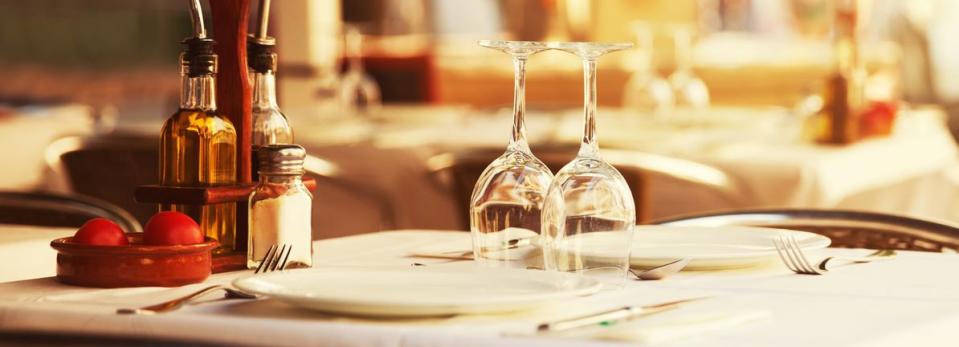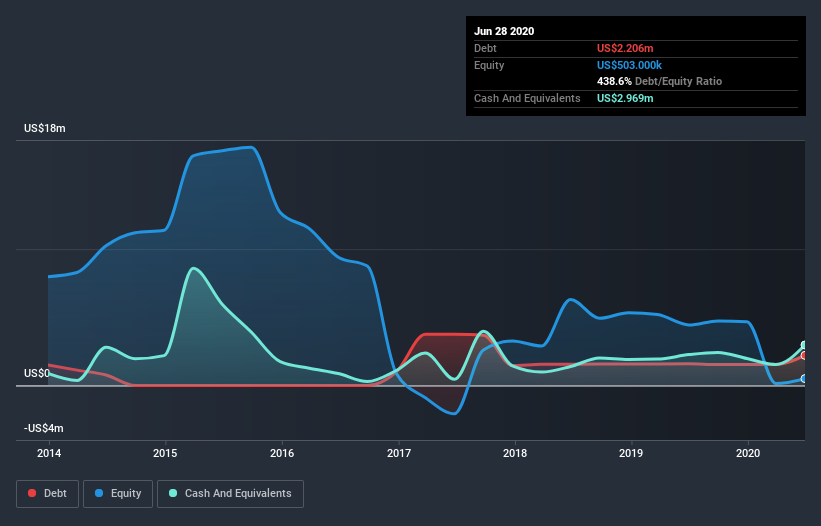We Think RAVE Restaurant Group (NASDAQ:RAVE) Is Taking Some Risk With Its Debt

The external fund manager backed by Berkshire Hathaway's Charlie Munger, Li Lu, makes no bones about it when he says 'The biggest investment risk is not the volatility of prices, but whether you will suffer a permanent loss of capital.' So it might be obvious that you need to consider debt, when you think about how risky any given stock is, because too much debt can sink a company. As with many other companies RAVE Restaurant Group, Inc. (NASDAQ:RAVE) makes use of debt. But should shareholders be worried about its use of debt?
What Risk Does Debt Bring?
Debt assists a business until the business has trouble paying it off, either with new capital or with free cash flow. Part and parcel of capitalism is the process of 'creative destruction' where failed businesses are mercilessly liquidated by their bankers. However, a more usual (but still expensive) situation is where a company must dilute shareholders at a cheap share price simply to get debt under control. Having said that, the most common situation is where a company manages its debt reasonably well - and to its own advantage. The first thing to do when considering how much debt a business uses is to look at its cash and debt together.
Check out our latest analysis for RAVE Restaurant Group
What Is RAVE Restaurant Group's Net Debt?
The image below, which you can click on for greater detail, shows that at June 2020 RAVE Restaurant Group had debt of US$2.21m, up from US$1.58m in one year. However, its balance sheet shows it holds US$2.97m in cash, so it actually has US$763.0k net cash.
A Look At RAVE Restaurant Group's Liabilities
Zooming in on the latest balance sheet data, we can see that RAVE Restaurant Group had liabilities of US$2.51m due within 12 months and liabilities of US$6.69m due beyond that. Offsetting these obligations, it had cash of US$2.97m as well as receivables valued at US$1.51m due within 12 months. So its liabilities total US$4.72m more than the combination of its cash and short-term receivables.
While this might seem like a lot, it is not so bad since RAVE Restaurant Group has a market capitalization of US$12.2m, and so it could probably strengthen its balance sheet by raising capital if it needed to. However, it is still worthwhile taking a close look at its ability to pay off debt. While it does have liabilities worth noting, RAVE Restaurant Group also has more cash than debt, so we're pretty confident it can manage its debt safely.
It is just as well that RAVE Restaurant Group's load is not too heavy, because its EBIT was down 40% over the last year. When it comes to paying off debt, falling earnings are no more useful than sugary sodas are for your health. There's no doubt that we learn most about debt from the balance sheet. But it is RAVE Restaurant Group's earnings that will influence how the balance sheet holds up in the future. So if you're keen to discover more about its earnings, it might be worth checking out this graph of its long term earnings trend.
Finally, a business needs free cash flow to pay off debt; accounting profits just don't cut it. RAVE Restaurant Group may have net cash on the balance sheet, but it is still interesting to look at how well the business converts its earnings before interest and tax (EBIT) to free cash flow, because that will influence both its need for, and its capacity to manage debt. In the last two years, RAVE Restaurant Group created free cash flow amounting to 7.7% of its EBIT, an uninspiring performance. For us, cash conversion that low sparks a little paranoia about is ability to extinguish debt.
Summing up
While RAVE Restaurant Group does have more liabilities than liquid assets, it also has net cash of US$763.0k. So although we see some areas for improvement, we're not too worried about RAVE Restaurant Group's balance sheet. When analysing debt levels, the balance sheet is the obvious place to start. However, not all investment risk resides within the balance sheet - far from it. For instance, we've identified 3 warning signs for RAVE Restaurant Group that you should be aware of.
If you're interested in investing in businesses that can grow profits without the burden of debt, then check out this free list of growing businesses that have net cash on the balance sheet.
This article by Simply Wall St is general in nature. It does not constitute a recommendation to buy or sell any stock, and does not take account of your objectives, or your financial situation. We aim to bring you long-term focused analysis driven by fundamental data. Note that our analysis may not factor in the latest price-sensitive company announcements or qualitative material. Simply Wall St has no position in any stocks mentioned.
Have feedback on this article? Concerned about the content? Get in touch with us directly. Alternatively, email editorial-team@simplywallst.com.

 Yahoo Finance
Yahoo Finance 
